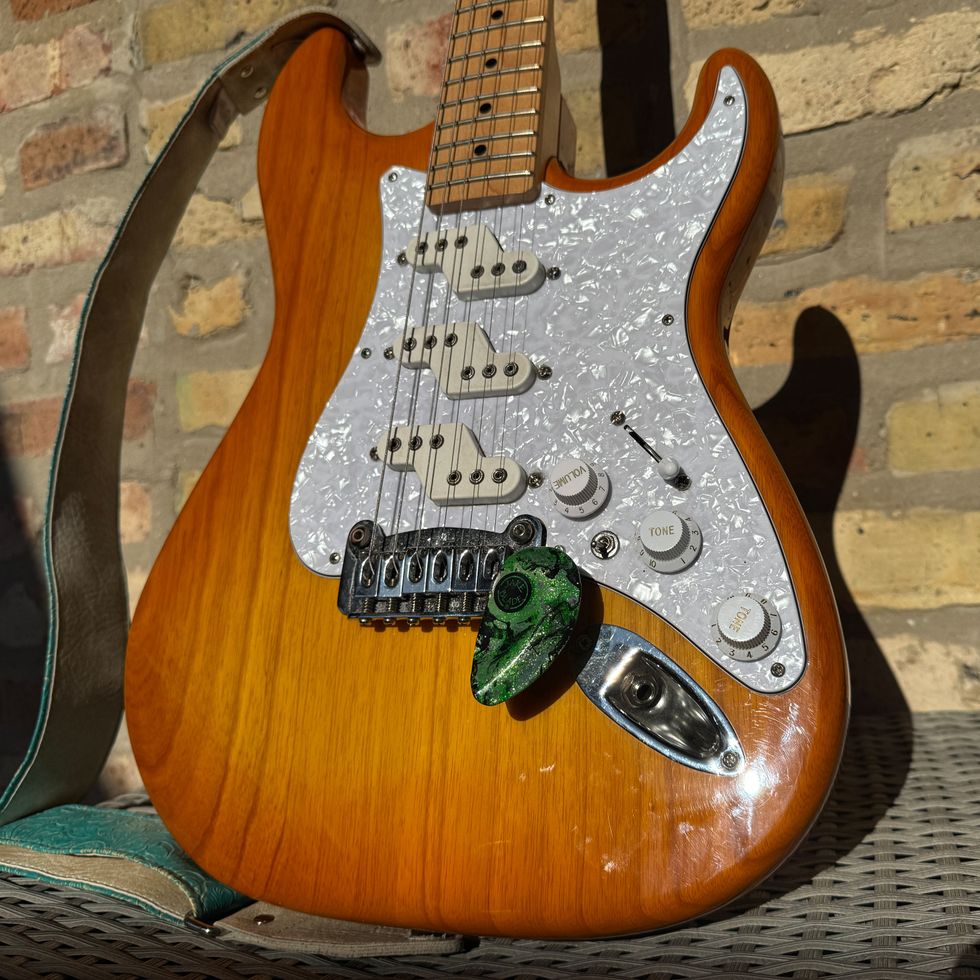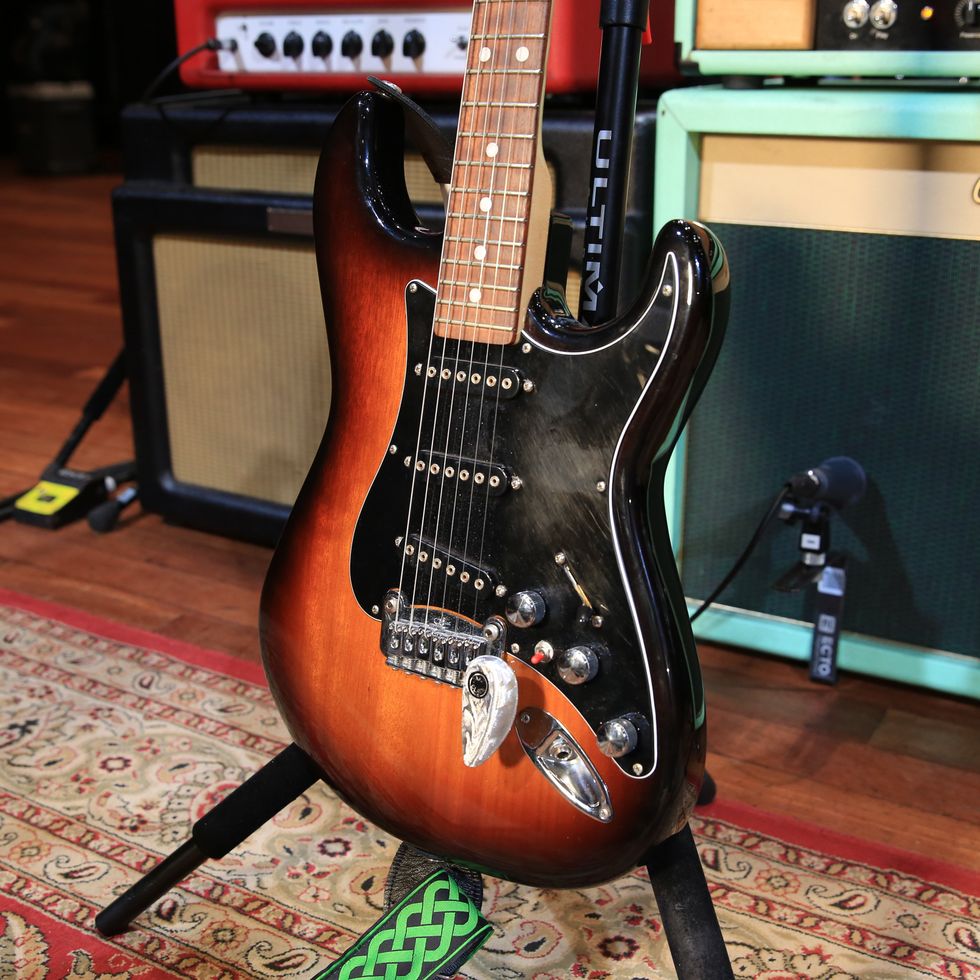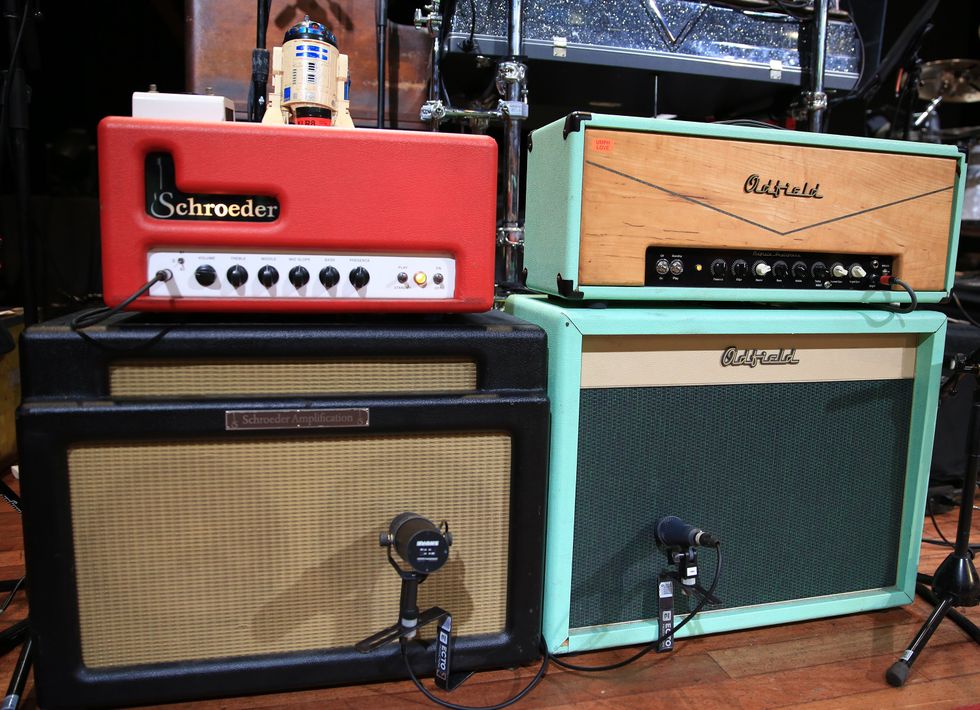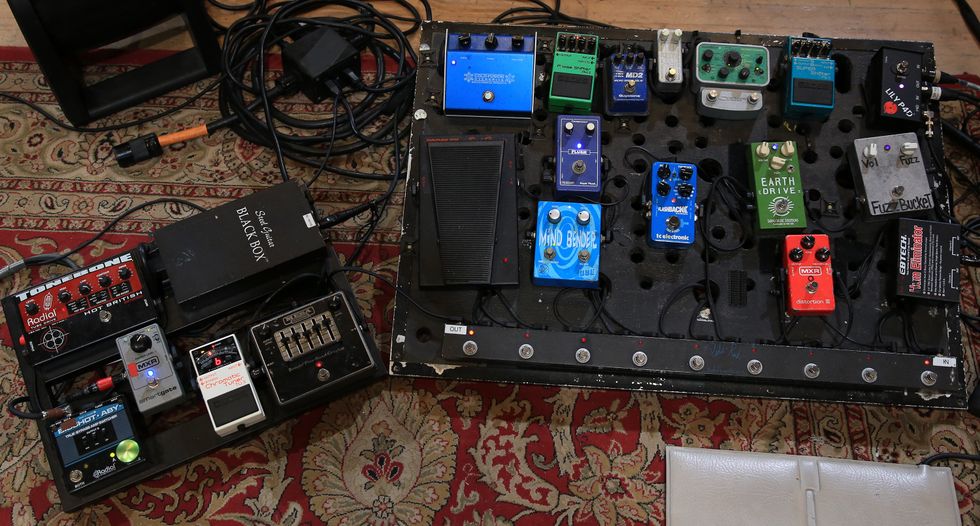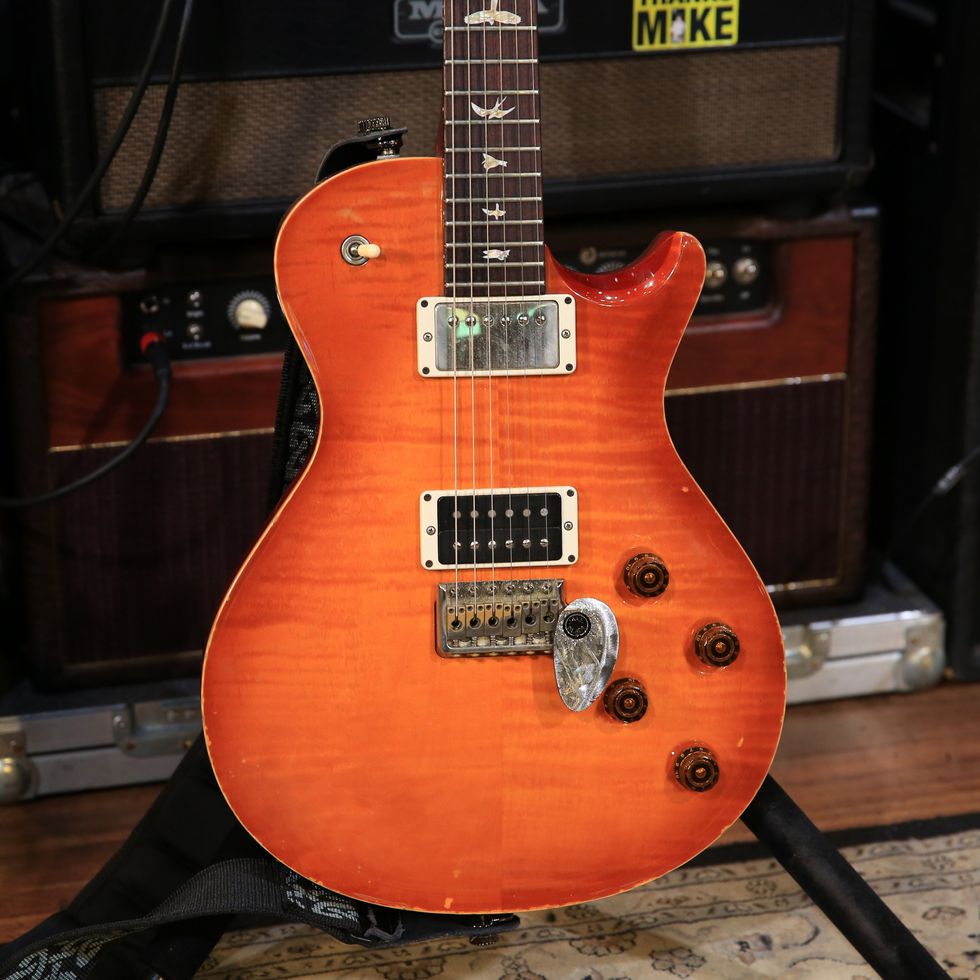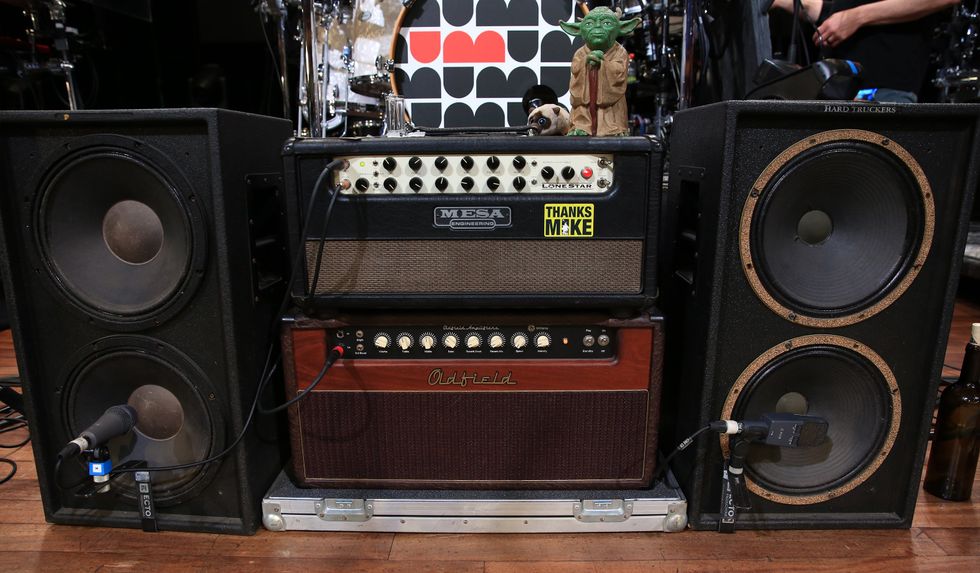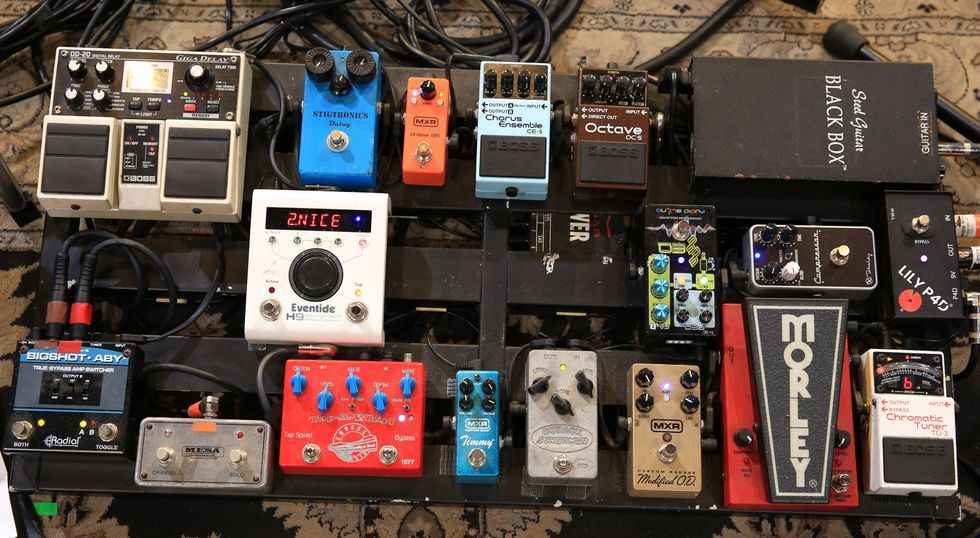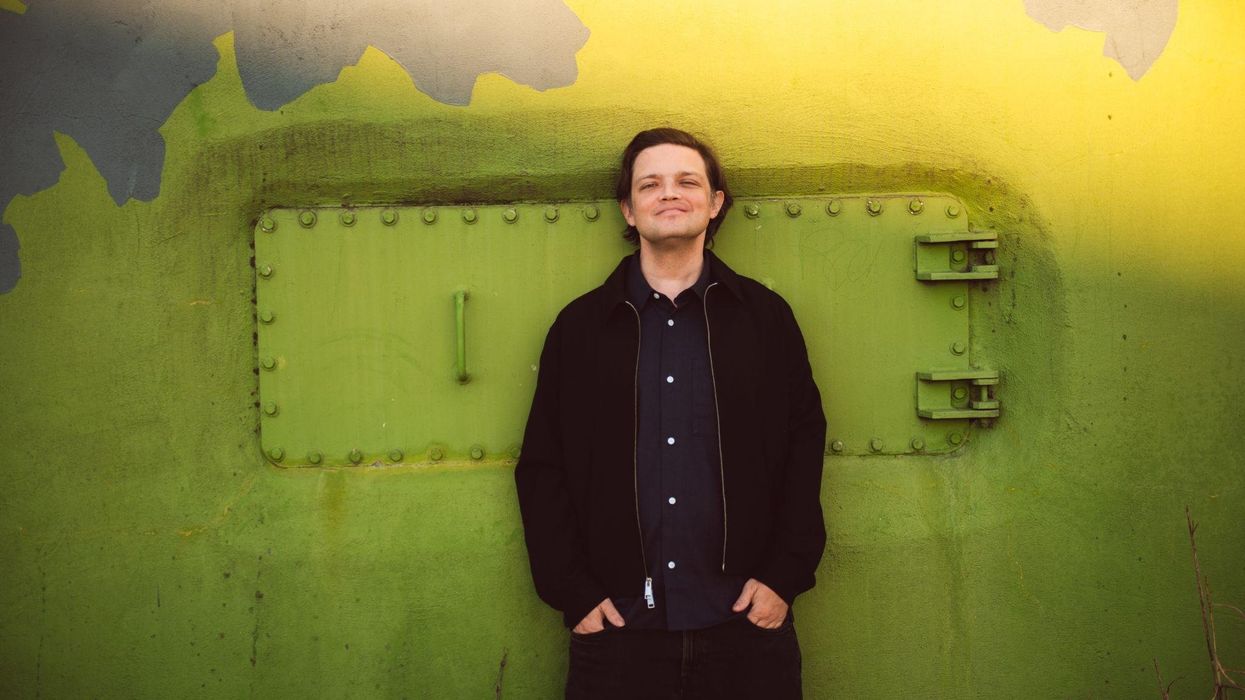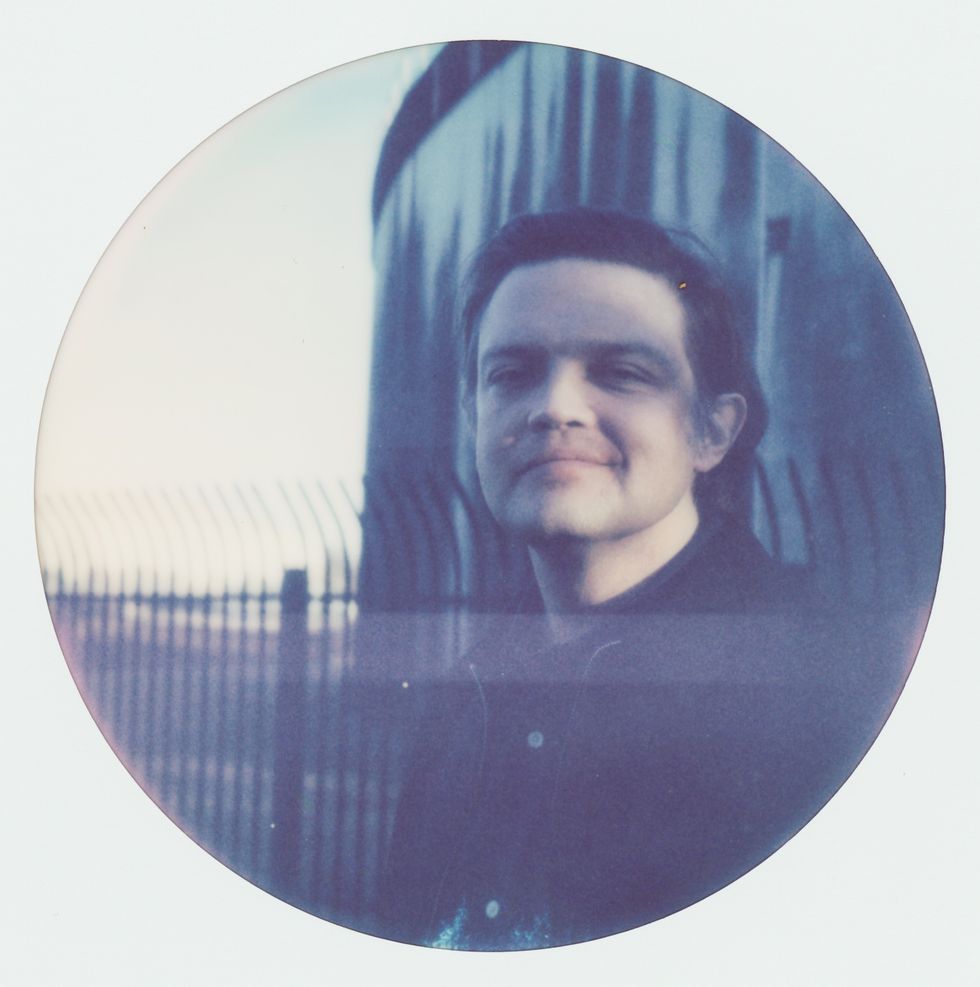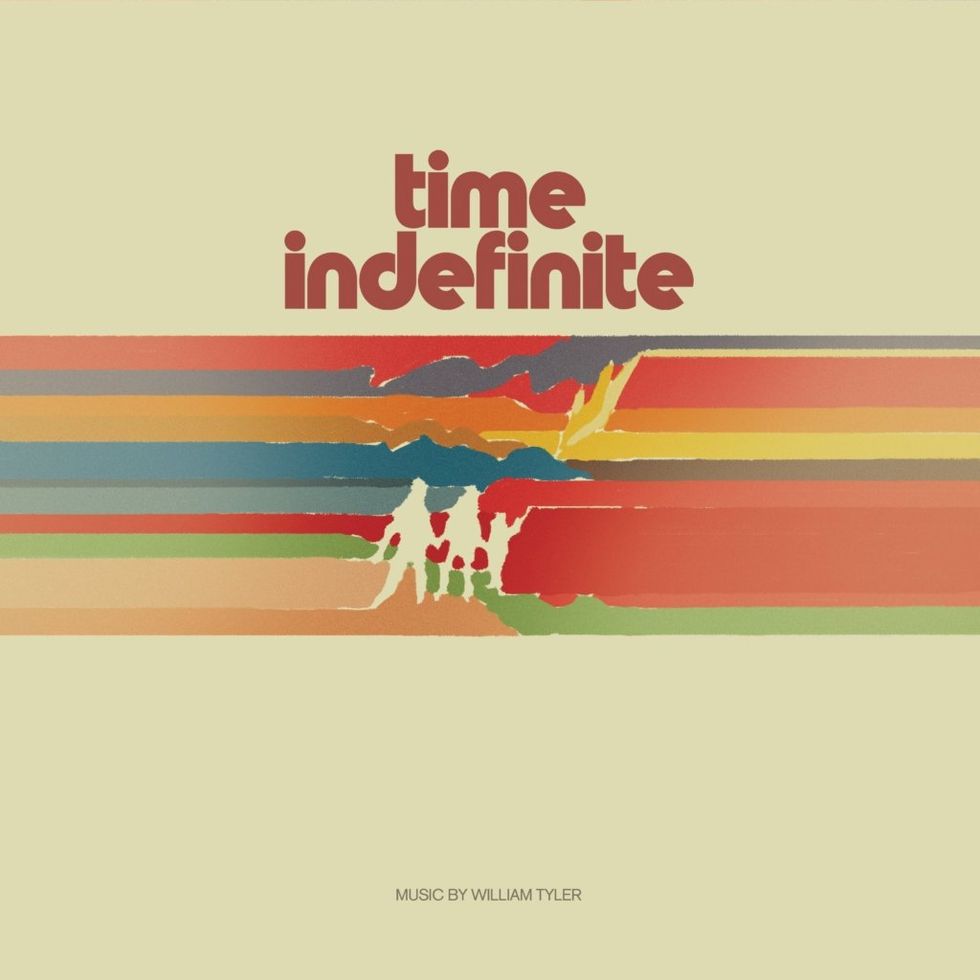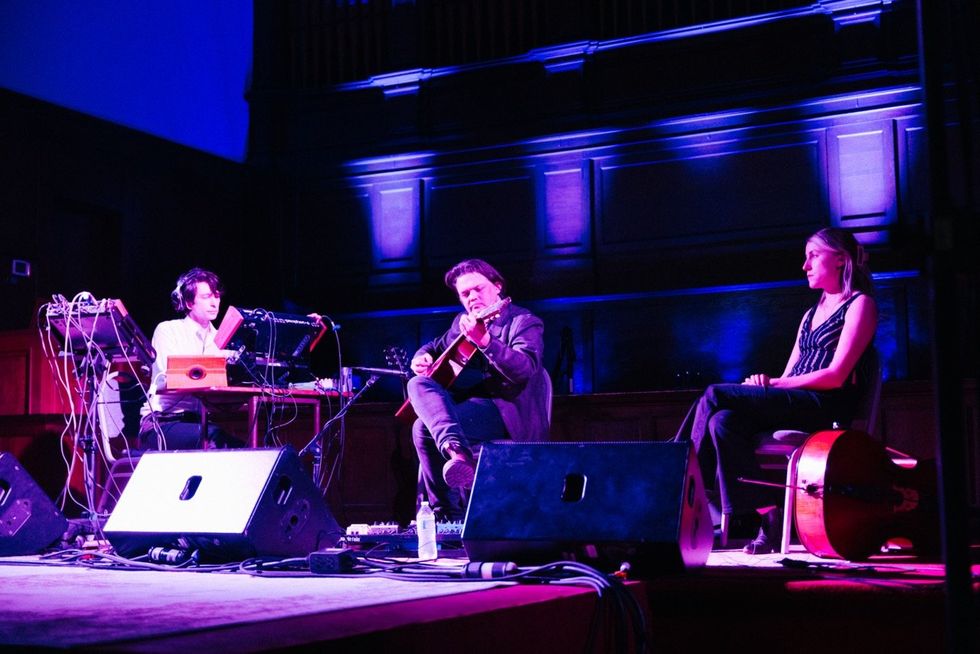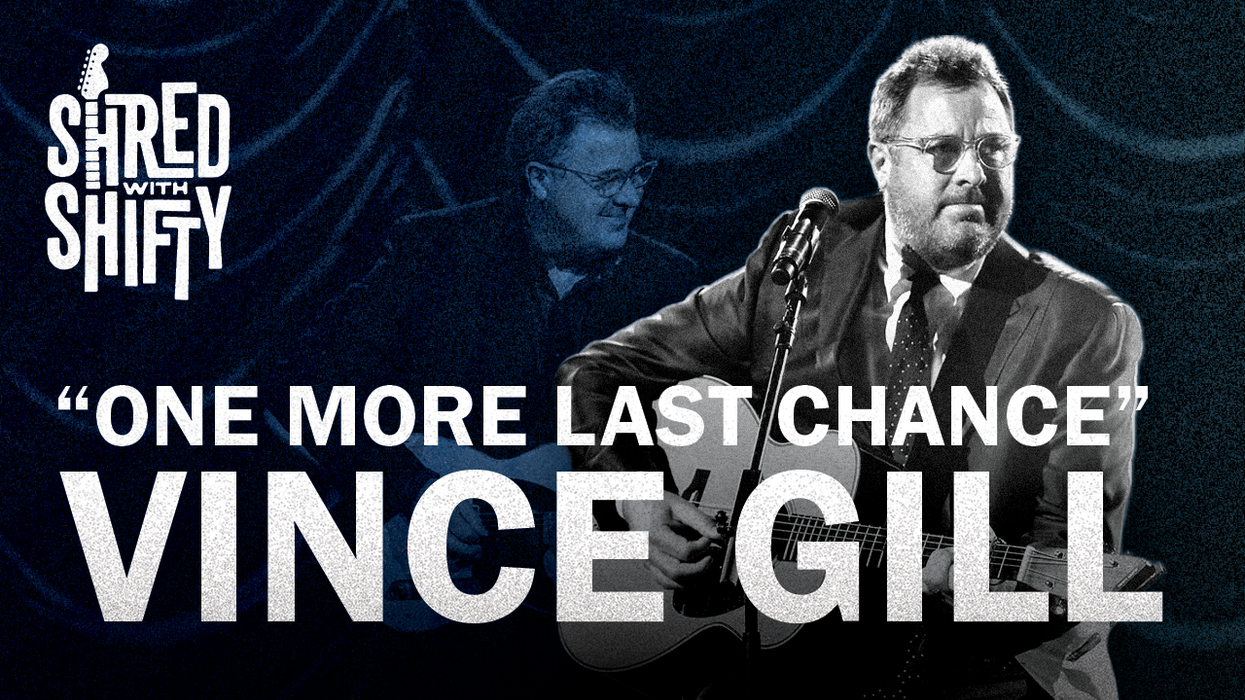Sir Richard Bishop’s Tangier Sessions isn’t just an album. It’s a love story. But as Bishop points out, it started like a script from The Twilight Zone: A world-traveling musician with a taste for the outré finds a little guitar shop in the back alleys of Geneva and wanders in. He eyes the elderly shopkeeper’s wares and is about to leave when the man pulls out an aged instrument from behind a cabinet. As the musician touches the guitar he feels a spark of energy and can’t stop playing. He leaves without it—because it ain’t cheap—but can’t get the 6-string out of his mind. He returns, twice, ultimately buying the guitar and taking it on the road.
If Rod Serling had had his way with this story, the next plot twist might reveal that a djinni living inside the instrument was responsible for the ensuing havoc in the poor musician’s life. But in reality the result is the seven beautiful acoustic-guitar improvisations on Tangier Sessions, recorded alone by Bishop at the top of a small house in that Moroccan city late at night, when the hubbub of the bustling alleys below grew silent. On the magical-sounding recordings, which Bishop captured with the built-in microphones on a Sony PCM D-50 portable recorder, the guitar and its player seemingly channel spirits. The tone is uncommonly rich and pure, with notes that remain ripe and full bodied even as they decay. Together Bishop and his find—a 19th-century build of unknown origin, with only a sticker from long-gone Georgia-based distributor C. Bruno & Sons—draw on the sounds of Middle Eastern, Gypsy, Indian, and American folk and classical music, mixed with a peppering of jazz and whatever else drifted into the room.
or a little of both?’”
“I’ve never had an experience with a guitar like this before,” Bishop offers. “I wondered, ‘Is there positive or negative energy in this, or a little of both?’ It didn’t matter. The first time I went back and asked the shopkeeper if he could do any better on the price, he knew that I was going to end up with the guitar. He also knew there was something special about it. He had great guitars in his shop—harp guitars, old baroque guitars—but he knew this one was supposed to go home with me.”
For Bishop, mixing styles and pursuing uncommon experiences—musical or otherwise—is a way of life. He was a charter member of the challenging Sun City Girls, a trio that carved a path through the international weirdo-rock improv scene by sledgehammering the boundaries of rock, jazz, world, punk, and experimental music into an all-encompassing form captured on 50 albums and half-as-many cassettes and concert videos over 26 years, starting in 1979. Their performances reflected the group’s interests in mysticism, religion, UFOs, ritualism, and Kabuki theater … as well as their uninhibited musical range.
No matter how diffuse or expressionist the Arizona-based Sun City Girls’ free-ranging aesthetic became, Phoenix-born Bishop (who took the liberty of knighting himself) was often a calming element in the storm, thanks to the articulate and mostly clean-toned nature of his playing. Those qualities carried into his solo work, which has included numerous domestic and foreign tours and at least a dozen albums and EPs—plus a trail of short-run CD-R releases—since his Salvador Kali debuted on the late John Fahey’s Revenant Records label in 1998.
But Bishop can’t be lumped into the post-Fahey/Takoma Records school of fingerpicking folk- and blues-based acoustic guitar wizards. For one thing, he primarily uses a pick—although Tangier Sessions includes his first two fingerstyle recordings—and the breathtaking spell he casts has more global origins. So when I spoke with Bishop, who was on the phone from his home in Portland, Oregon, that’s where we began.
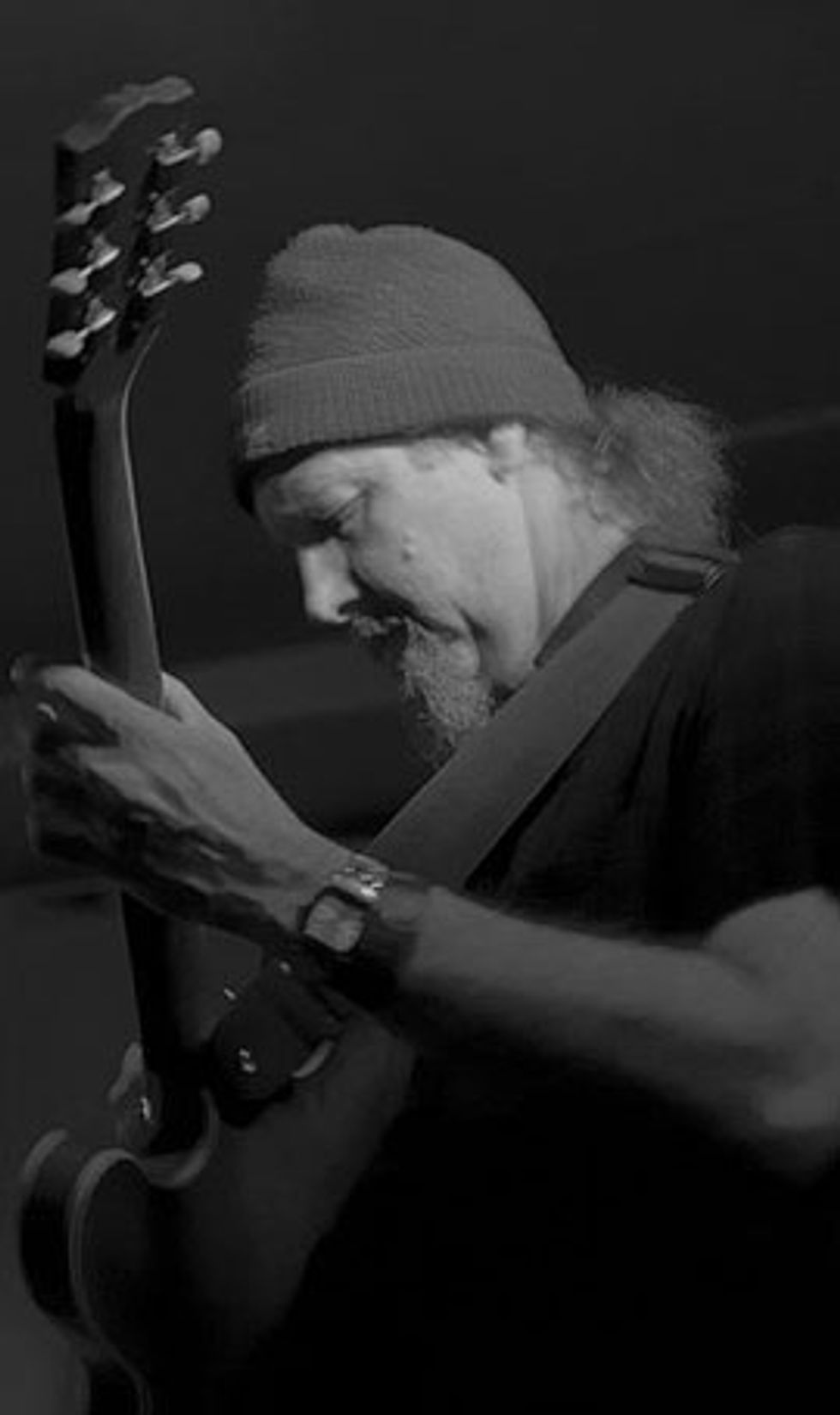
Photo by Christopher Altenburg.
How did you develop your genre-blending playing style?
Before Sun City Girls began, I was your typical guy out of high school playing classic rock and copying everybody. That’s how I learned. When we met our first drummer [Charles Gocher], he was coming from a background of free jazz and weirdness, like the Fugs. To play with him I had to start improvising and doing crazy things. My style is a mish-mash that comes out of improvisation, with mistakes and everything along the way. I never worry about what the style is, and whatever comes out, comes out. That’s how it works … and how it doesn’t work sometimes.
What was your gateway listening for improvisation?
I got into the Steve Howe realm, where you’re hearing elements of classical music, and Robert Fripp and James “Blood” Ulmer. Just hearing something that was different than Ted Nugent, Ritchie Blackmore, and Jimmy Page, who I adored, opened different avenues to explore. I started playing things that didn’t make sense, trying to come up with my own sound. As long as it was a little odd, I was comfortable with it. Eventually I started hearing [free music guitarists] Sonny Sharrock and Derek Bailey. The idea was to make sounds on the guitar that didn’t have to fit any realm or theory, and that’s what I’m still doing.
Are you self-taught?
When I was 10, my parents bought me a shitty red, white, and blue acoustic guitar and had me take lessons for about three weeks. When I started playing in high school, I had friends who taught me a few chords so I could play rhythm and we could jam. From there, I just figured things out. I’ve never had any real lessons or studied theory, and I’m okay with that.
Tangier Sessions constantly blends cultural signatures. Is there a strain of world music that speaks to you loudest?
Middle Eastern music. I’m half Lebanese, and my grandfather used to play old cassettes of Lebanese music—Farid al-Atrash, especially, playing oud. This is before I was even interested in music. But he planted a seed. He also played us some [legendary Egyptian vocalist] Uum Kulthum and other pretty high art from that region. Once I started playing, I remembered those sounds and started to experiment with Eastern scales, or at least notes. The other side would be Indian music. Always been a fan of Beatle George and always liked the atmospheres that Indian music created. So I’ve incorporated some of that into my playing, but not necessarily the theory behind any of it.
Photo by Uwe Faltermeier.
What was the space you recorded in like, in terms of its sonic qualities and its ability to inspire you?
It was in a building owned by an American ex-pat in the middle of the old city, among these little winding alleys. He rents the bottom floor out to a Moroccan family. I recorded upstairs in this little square room that had Moroccan tiles on the wall—which is no big deal because every place there has Moroccan tiles. You could put a ladder out and get on the roof. It had a bed and almost no furniture, and was no more than 10 feet square. From the roof you could see 360 degrees around all of Tangier and—if it was clear outside—the Mediterranean Sea and Spain. There was something about the sound in the room. I had to experiment with placement, because I just had a little digital recorder, but there are no effects. I added a tiny bit of reverb during the mastering process, and all of the songs were recorded in the order they appear on the record.
How important is traveling for your inspiration?
It’s always been a big deal to me. A lot of time I don’t travel with an instrument when I’m going to Morocco or India. I take little trips to study mysticism or whatever is interesting me at the time. I’m always seeking out weirdness, whether it’s musical or not. Last year I put out a 10-inch that had some sounds that were inspired by being in Thailand. A lot of my albums have at least one raga-type tune, because if you expose yourself to that it’s going to seep in.
Sir Richard Bishop's Gear
Guitars
1961 Gibson ES-330
1964 Gibson ES-120T
“C. Bruno”-labeled acoustic of unknown date and origin
Dell’Arte Minor Swing
Gitane DG-300 John Jorgenson Signature Series
Amps
Fender Pro Junior
Effects
Boss RC-20XL Loop Station
TC Electronic Hall of Fame Reverb
TC Electronic Flashback Delay
Electro-Harmonix Superego Synth Engine
Strings and Picks
D’Addario EJ22 medium (.013–.056) nickel-wound strings
Martin light (.012–.054) or custom light (.011–.052) acoustic strings
Savarez Argentine New Concept silver-plated copper-wound Gypsy jazz strings (.011–.046)
Wegen Fatone 5 mm picks
Gypsy Jazz 3.5 mm picks
Schertler acoustic guitar pickup
You are a die-hard plectrum user, so why did you opt to fingerpick on “Frontier,” which is a unique-sounding, baroque-flamenco hybrid, and “Bound in Morocco,” which has a classic Middle Eastern sensibility at its foundation?
I always use a pick. I’ve never been able to play anything interesting without one. But after I got this guitar home I found out it sounds better without a pick, and that created a problem for me. I play it with a pick when I mess around, but with my fingers it’s much more natural and warm. It seems like this guitar was supposed to be played with fingers. So for those two songs I wanted to see what I could do. I would have recorded more that way if I could. Since the recordings, over the last year or so, I’ve experimented with different picks on the guitar and I’ve developed different sounds that I can work with. It’s such a small guitar, but it has a big voice. The highs are good, and even the lows are good most of the time. I might need to experiment with strings next.
Both of those songs are in standard tuning. “Bound in Morocco” is strange, because while it does seem like it has some focus, it never gets anywhere in particular. It’s one of my favorite ones on there—Em, A and Am, and nothing more to it than moving around those chords.
Have you learned anything more about this instrument?
The mystery has deepened. After I bought the guitar I went to Thailand and then did a European tour. When I arrived in Belgium, some glue had come undone from the guitar’s heel. I had to have an emergency repair. The luthier loved the guitar so much that he put me at the front of the line and fixed it overnight. But he was frustrated that he couldn’t tell me anything about the guitar. He knew 19th-century guitars, parlor guitars … he asked me where I lived, and I said, “Portland, Oregon.” And he said, “You’ve got to take it to Kerry Char,” who is a luthier here in Portland.
Last week I took the guitar to Kerry—he has it as we speak. He loved it. We looked it over for two hours. He put a camera inside with a light and found writing under the top. But we couldn’t figure out what it says or what language it’s in. There’s also a date on the guitar—we can see a one, an eight, another one, and something that looks like a three. But we don’t think it’s from 1813.
He did say that whoever made it used very old guitar-building techniques and did a very good job. He was looking at the heel, which he calls a snow-cone shape, and says it’s possibly from the 1850s or earlier—which is just thrilling for me. He is going to try to get photographs of the writing with another camera, and maybe then we can figure out who made it and when. I thought because it had the Charles Bruno sticker that it’s probably an American guitar, but if there’s writing inside that’s not English … well, I like the mystery. I just don’t want somebody to tell me Sears & Roebuck made it in the 1940s.
YouTube It
Sir Richard Bishop talks about acquiring his mysterious “C. Bruno” acoustic. The guitar first appears at 2:55, than at 4:00 Bishop begins playing at the same calm pace that makes Tangier Sessions so entrancing.
What other tunings did you use on Tangier Sessions?
Most of the songs are in standard tuning, but I believe that “Mirage” is D–A–D–G–A–G. “Hadija” is some form of open Gm. And that’s it.
What first led you to open tunings?
It goes back to the Sun City Girls days, where we were trying different things. The main open tuning I used in the band was open E. We used that a lot on [1990’s] Torch of the Mystics, which some people consider our best record. I also took that tuning into a lot of my solo playing, like “Fingering the Devil,” and a lot of my raga pieces. That and standard have been my main tunings. I have experimented over the years with other tunings, but none of them ever stick because I don’t have the patience to sit and work with them. For this record I was going to try open E, but the guitar already had tension. I didn’t want the thing to crack in half.
Most of the time I don’t listen to other music. I like to play my guitar. But when I do listen, there’s a lot of Middle Eastern music. Lately I’ve been listening to music from Southeast Asia—Indonesia, Thailand. Not to inform my guitar playing. It’s just something I like. And I can always listen to free jazz. I love Sun Ra—I could listen to Sun Ra for 24 hours a day. I like music where I don’t really know what’s going to happen. I like being surprised.


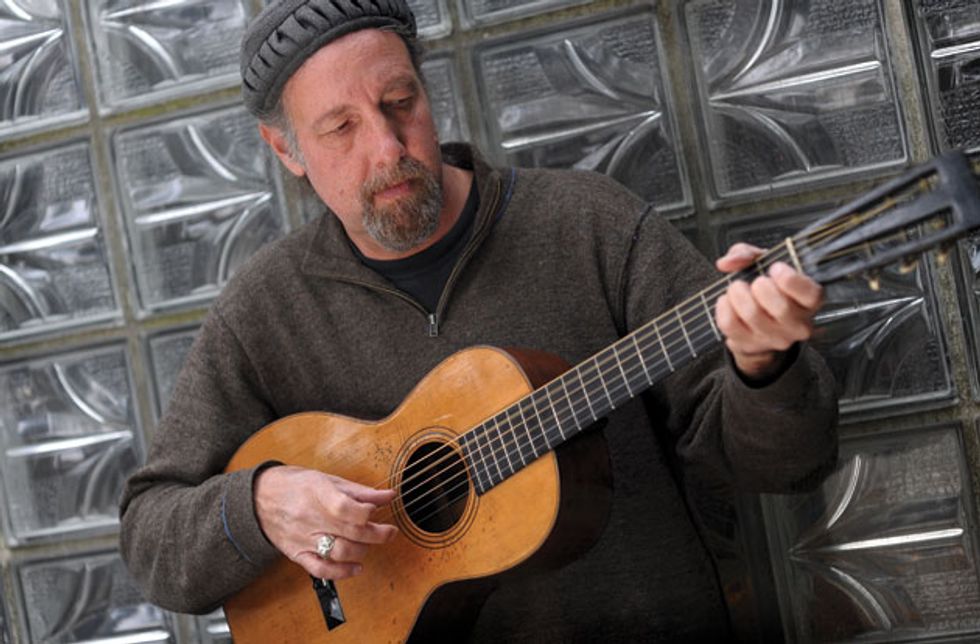
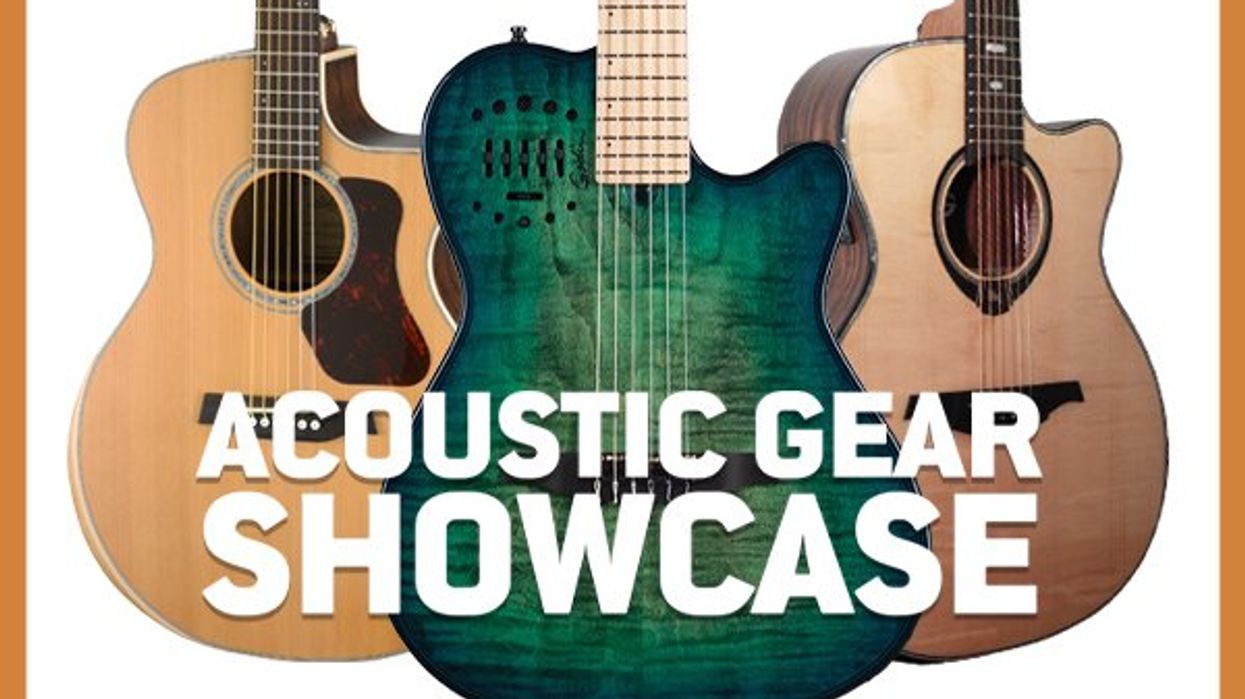
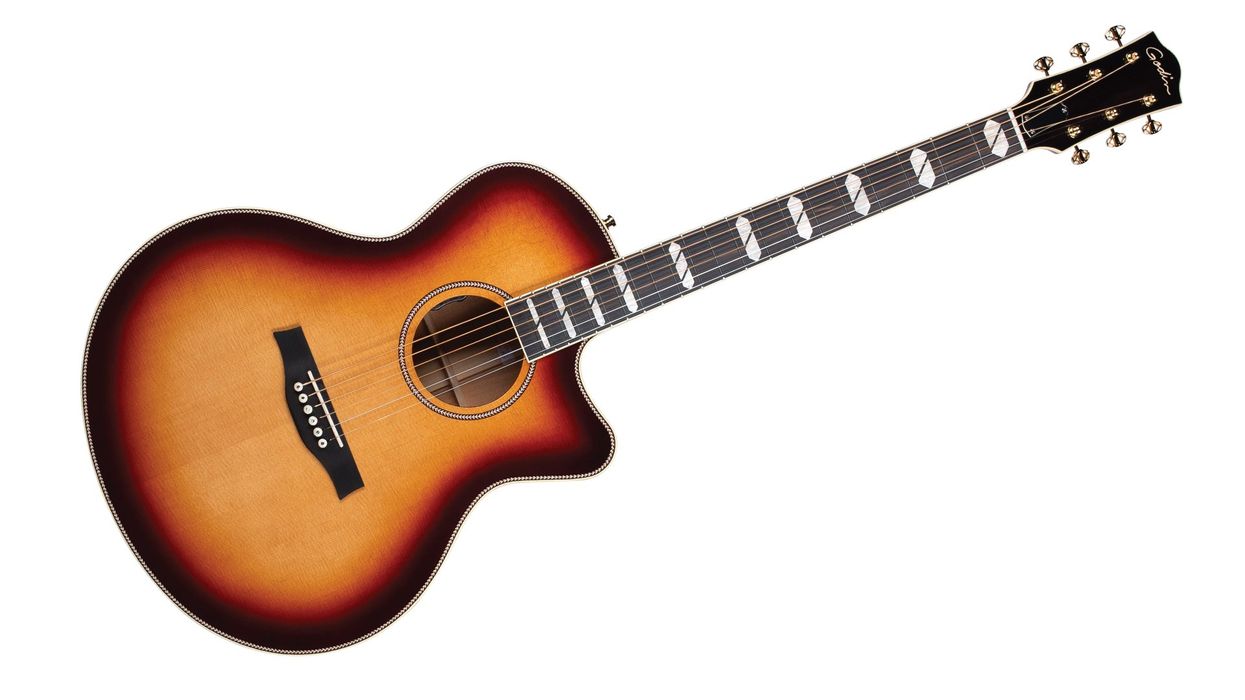
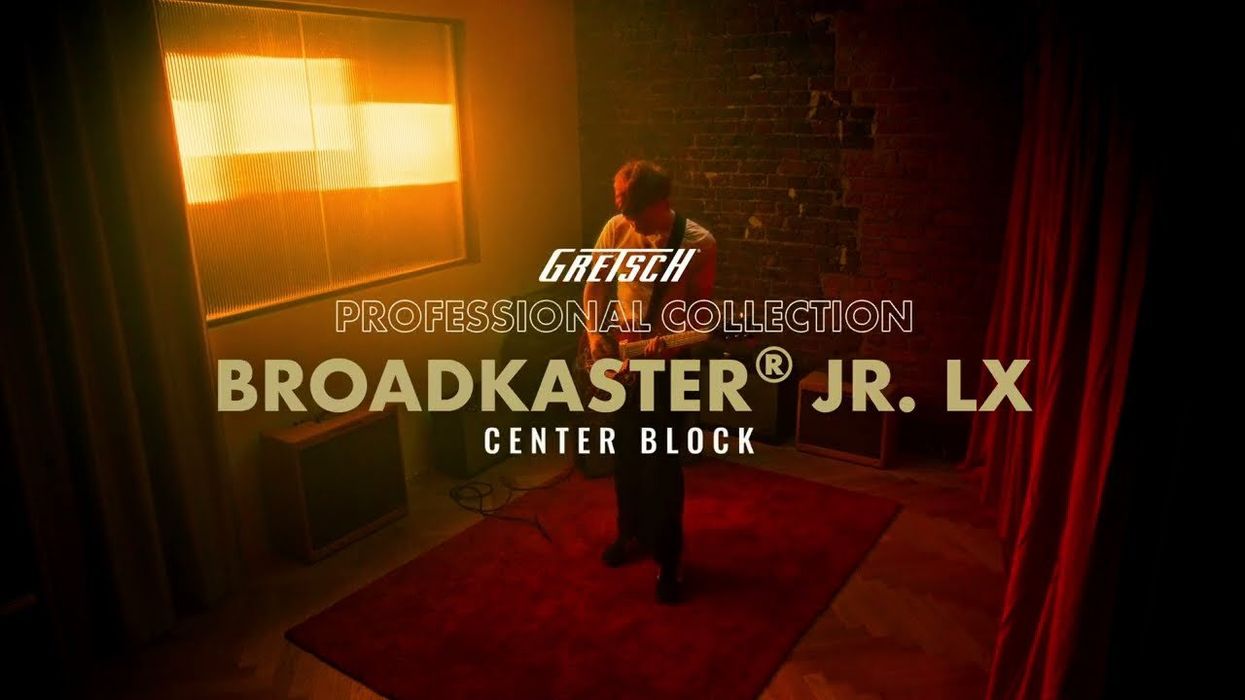
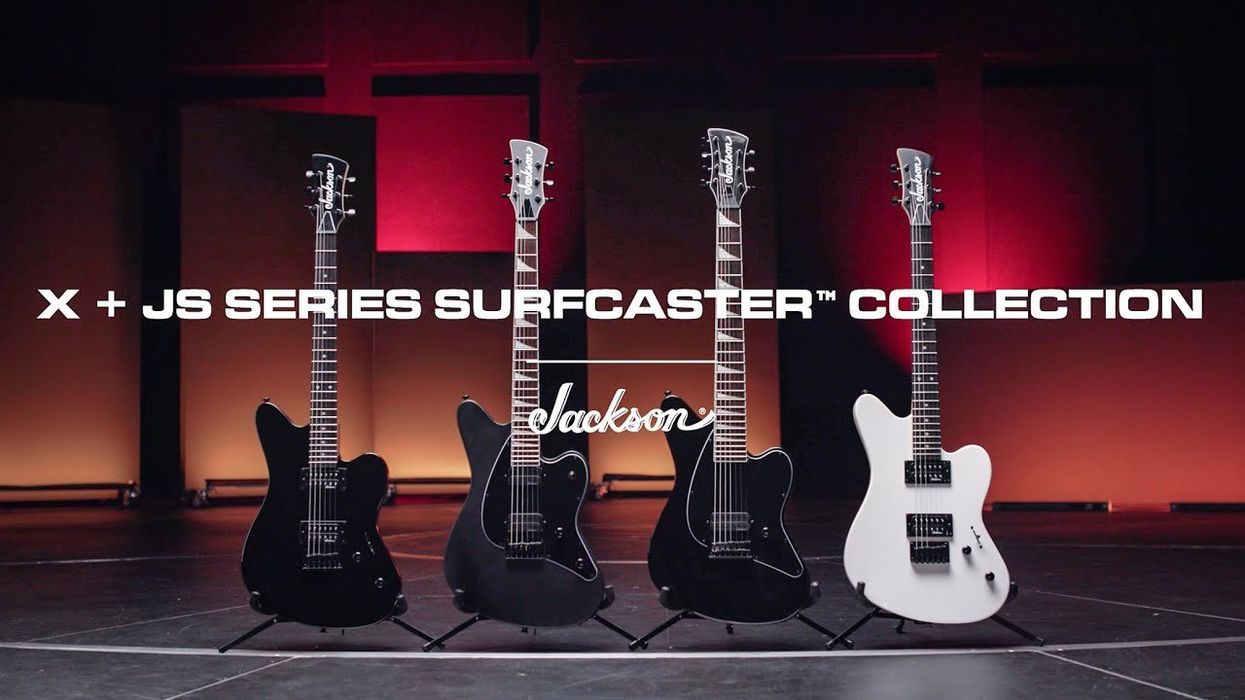
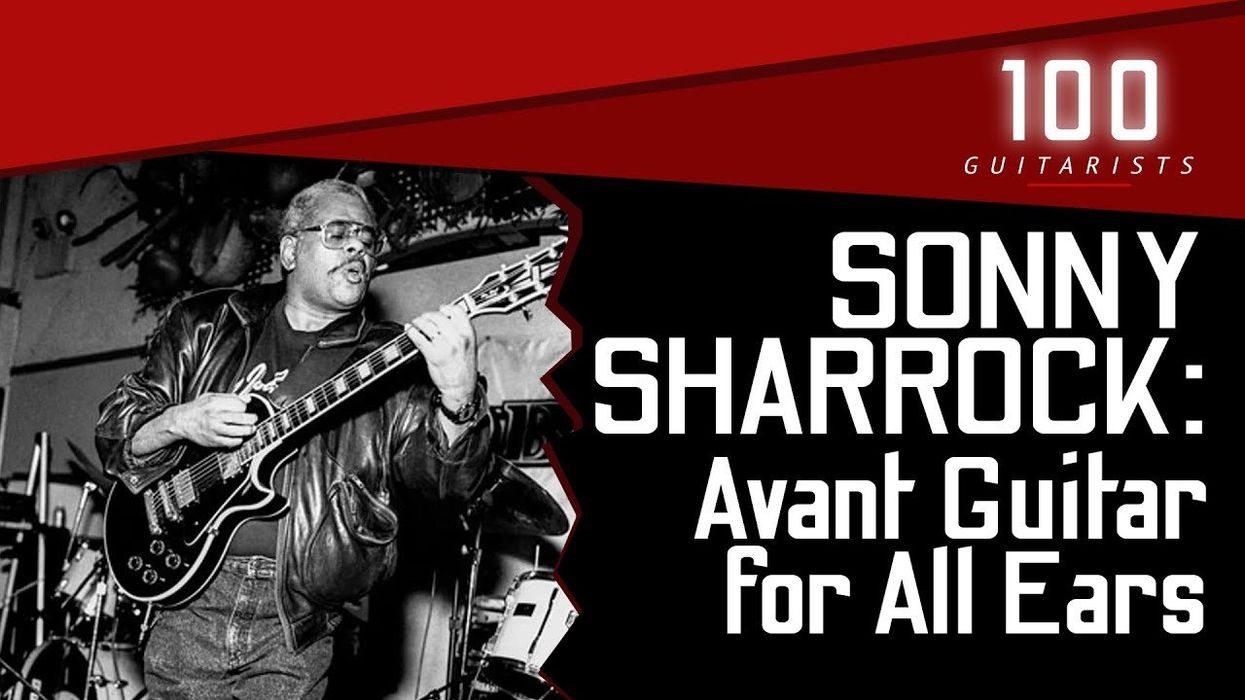
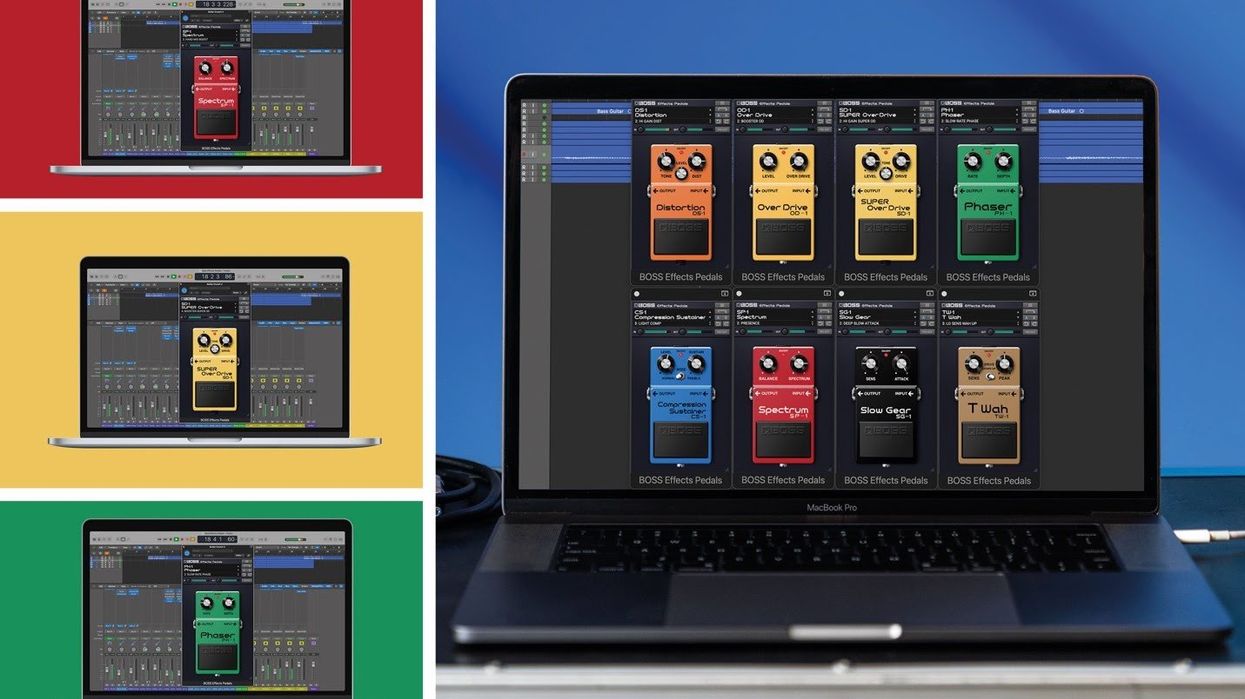

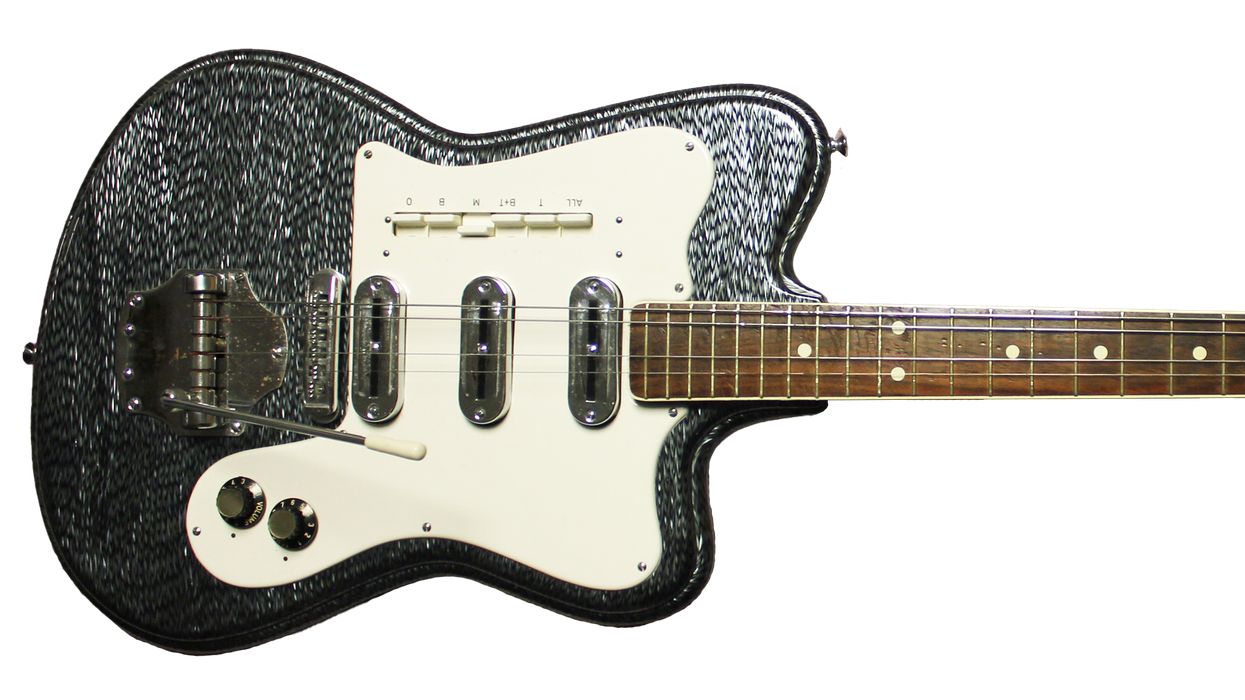
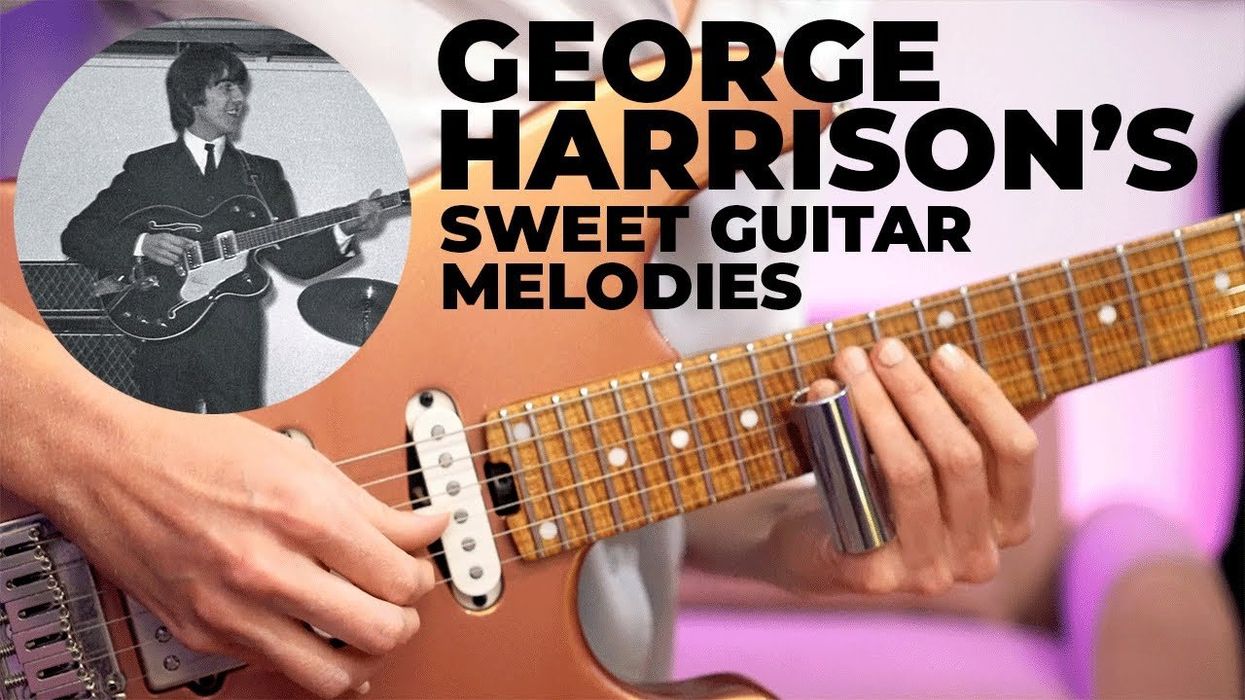
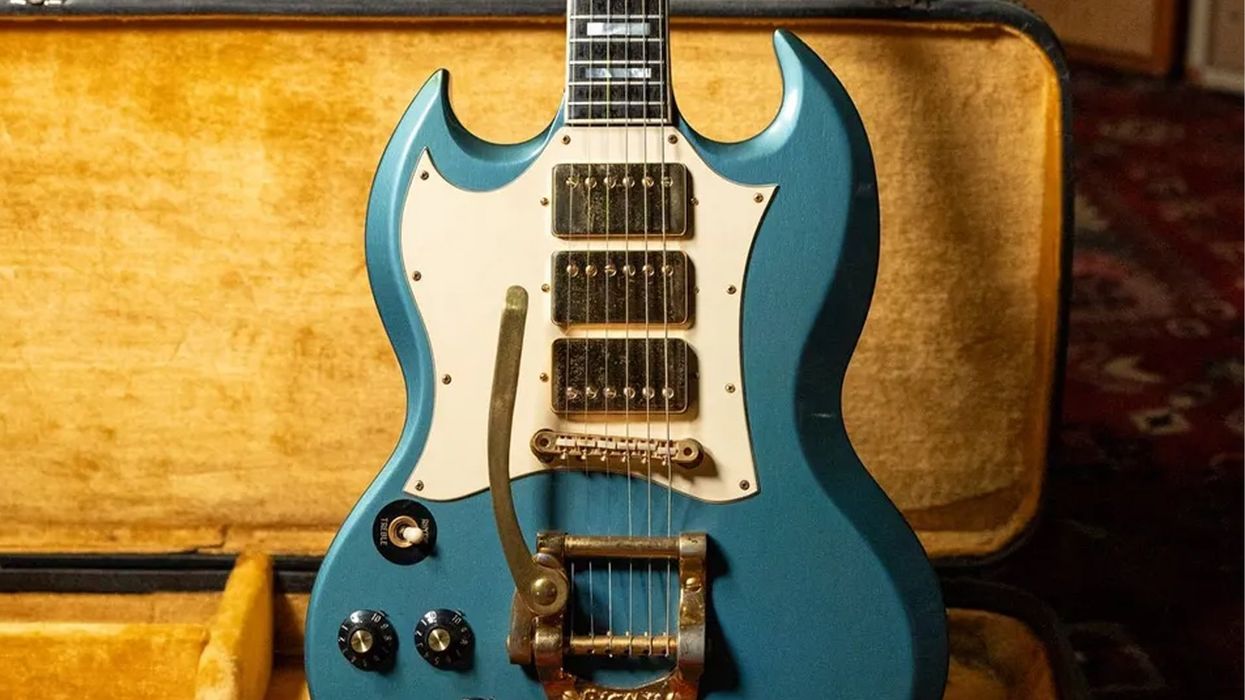
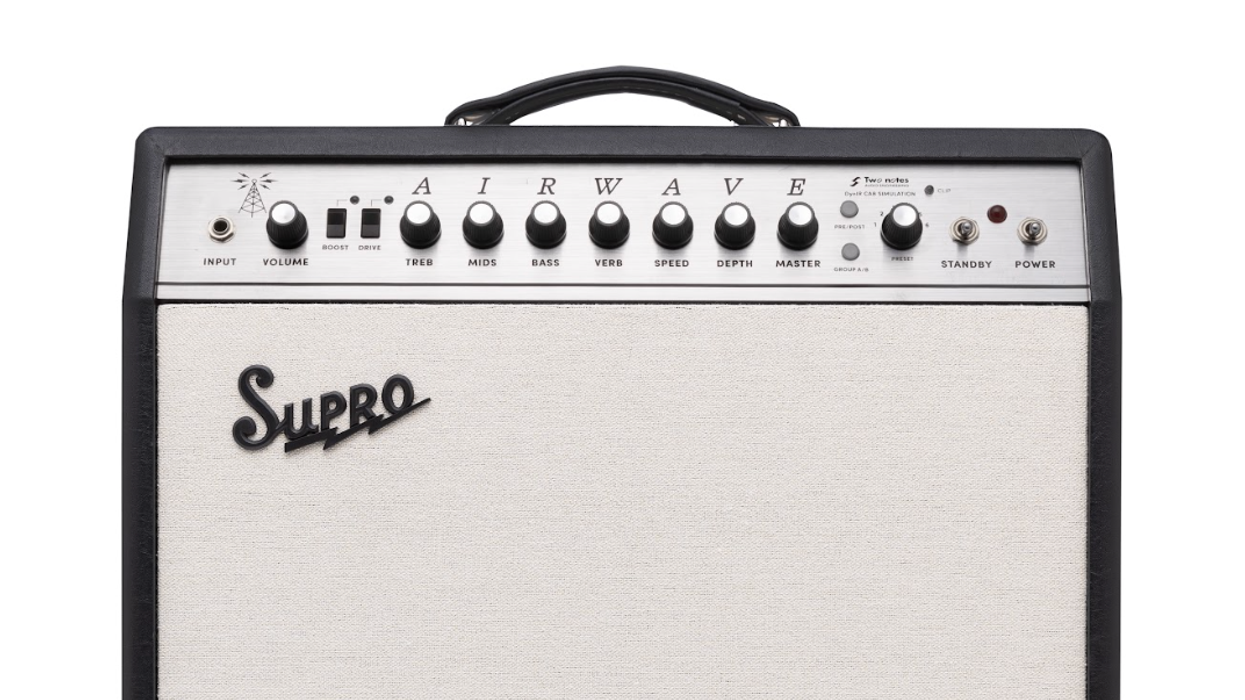
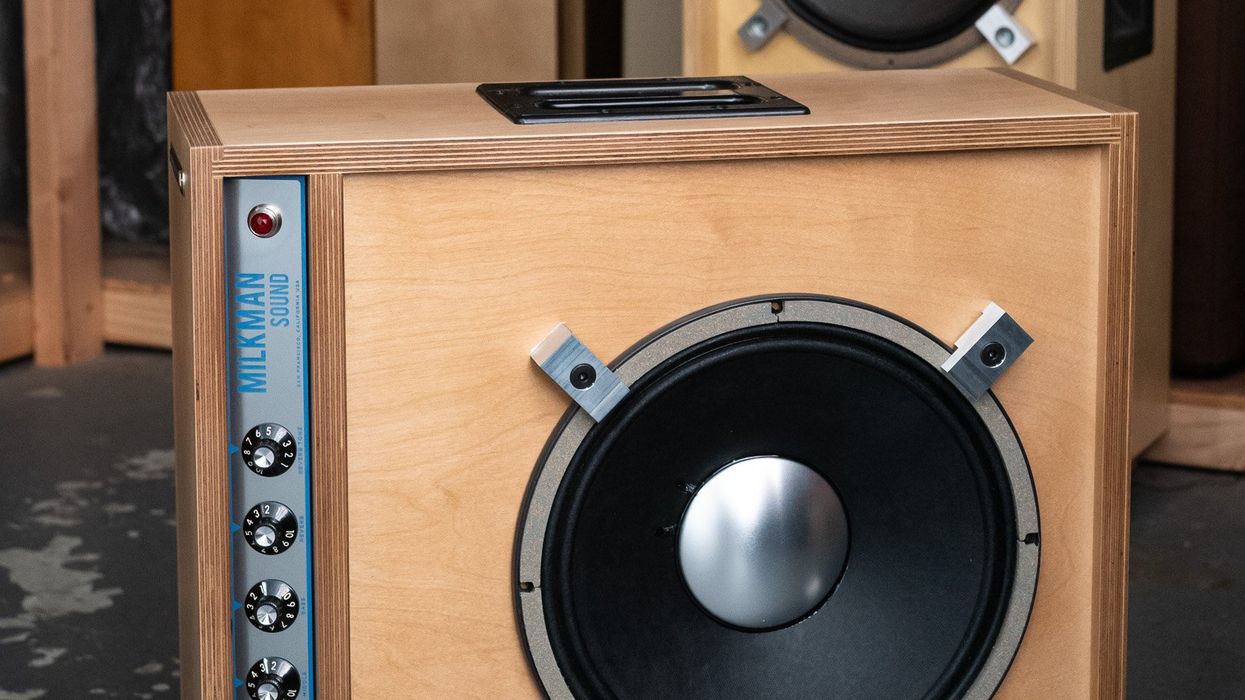
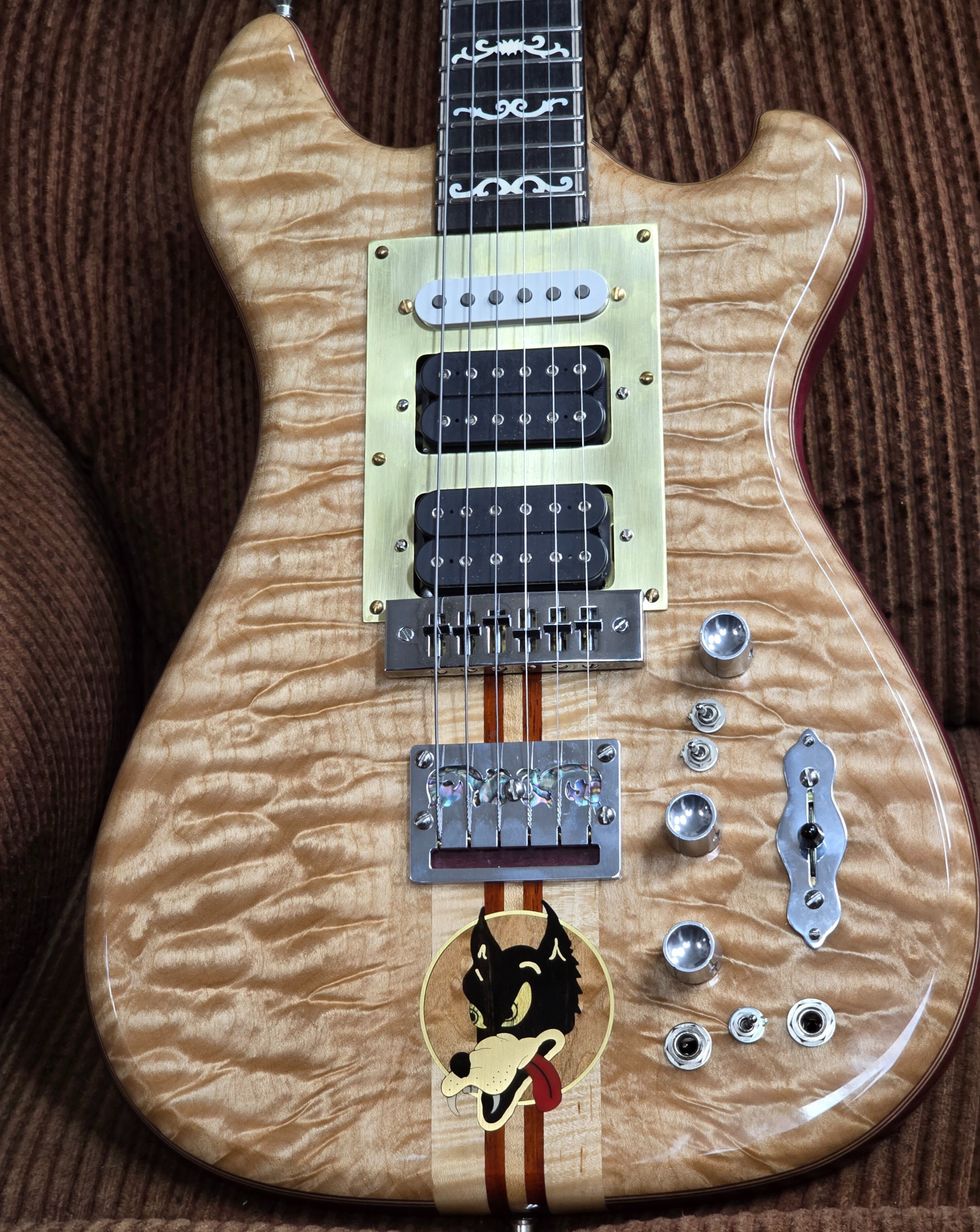
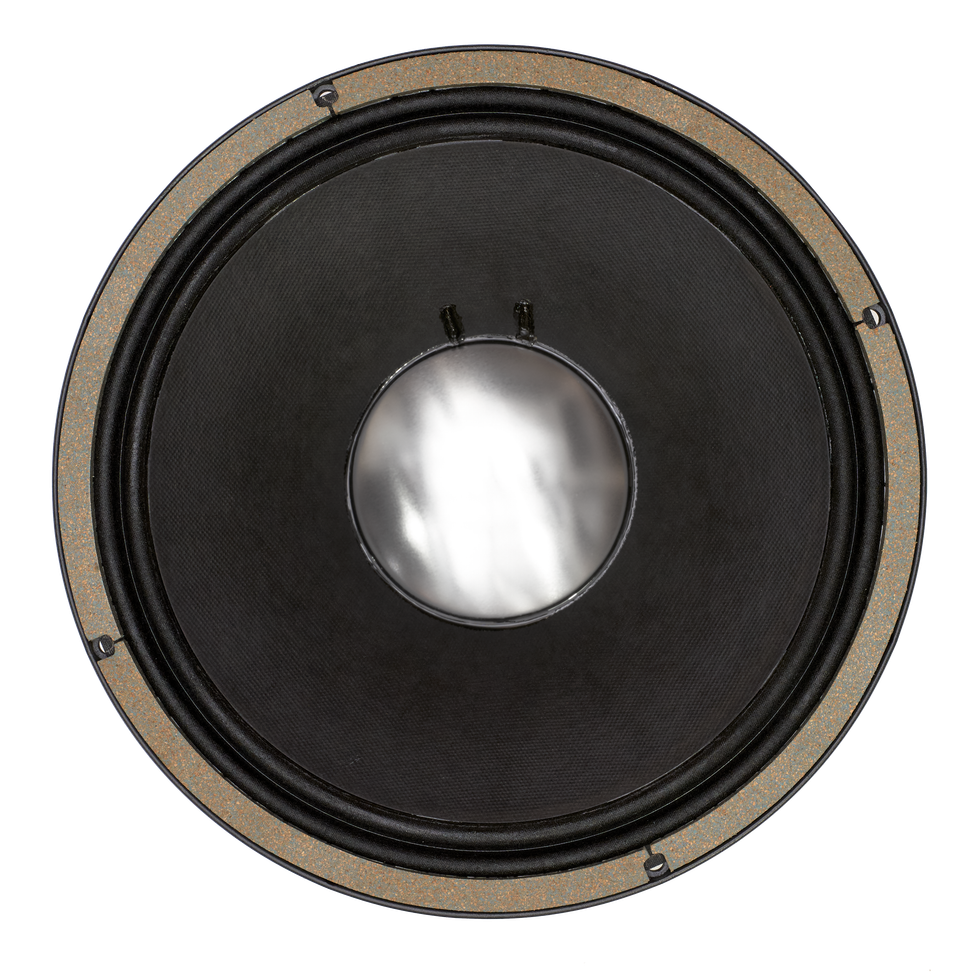
![Rig Rundown: Umphrey’s McGee [2025]](https://www.premierguitar.com/media-library/youtube.jpg?id=60219771&width=1245&height=700&quality=85&coordinates=0%2C0%2C0%2C0)
